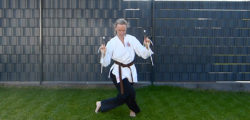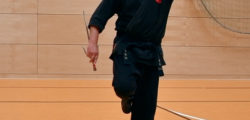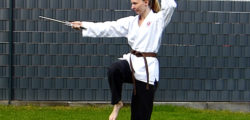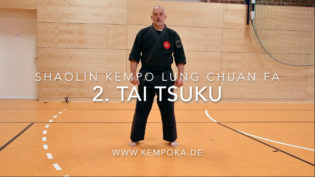Can you really learn martial arts with YouTube? Hm, actually I have a pretty clear opinion about that: Nope, I can’t. The “real” training with a trainer or teacher can’t be replaced by staring at the PC. Because it is about much more than just movement.
But honestly: Of course I am looking for one or the other move, for a trick or an interpretation that I would like to learn. I have actually managed to do a few nice Bo tricks. Sometimes it doesn’t work any other way, you can’t always go straight to a trainer.
But in Corona times, with contact blocking and social distancing, you are simply forced to think about alternative ways of training together. It was a coincidence that the question of a friend of mine, Kempoka from Wesel, reached me shortly before the lockdown: Can you show me your sai form? I would love to learn it.
Social Distancing vs. Kempo?
Sure I can. But there’s 200 km between Mareike and Kalletal. And direct contact wasn’t even possible due to the lockdown. But is there really no way? Couldn’t we kill two birds with one stone? Firstly, develop and try out a digital teaching and learning format.First, try a digital teaching and learning format. And then to learn a lot more when it comes to digital publishing itself? The idea in my head, I thought about the details of how to do it. Mareike has already done some basic exercises with the steel trident, so I didn’t have to start from scratch. And as a brown belt in Kempo, with the Shaolin monks Manfred and Joachim as brilliant teachers, she is of course saddle-fast when it comes to the general understanding of Kata.
We usually teach Kata in small steps. That’s what most martial arts teachers do. So I divided the sai kata into meaningful morsels and recorded them in selfie mode. Nice and slow so that the movements are clear. To make it as comprehensible as possible, I had a second camera running along from the side. Always at a break I “handed in” the sai past the camera. Without a cameraman (which was forbidden) it was not that easy. But so I had a transition. And of course I also ran the kata completely (not only once, I can tell you!) until it was as good as possible.
Fight with the computer
Then I started using my digital booty to make a video learning unit out of it. And if possible in the same way as it is done in daily training. First show the whole kata. Then I added the first sequence, in slow motion and with many comments. This strip I then sent to Mareike. She looked at it and started to practice the first sequence. When she thought she was halfway fit, she recorded her sequence and sent it to me. Then I “corrected” it by mail and WhatsApp, so I sent her comments. Here the position a bit different, because the rotation. But the young lady, who is training for her first DAN, did a damn good job.
And now the second sequence, which I attached to the complete work, came again with “Handover”. And then her reply, which again found its way into the video, then the third and so on. Apart from the pure recording, the editing of the video, i.e. sitting in front of the computer, adjusting the settings, the comments, was the actual time-consuming task. The whole result is now uploaded to YouTube.
So: You can actually learn digitally, even without direct contact. Of course this is just a crutch, because martial arts is more than just a sequence of movements. Many explanations or details can only be given vis-a-vis. But at the next physical meeting, at the next joint training, we can work wonderfully on details and don’t stick to the whole sequence of the form anymore. That stays in the memory. And since the internet doesn’t forget anything and the video of the joint effort can be found online, the result is also a great memory aid.
Or a suggestion to follow the example! 😉











